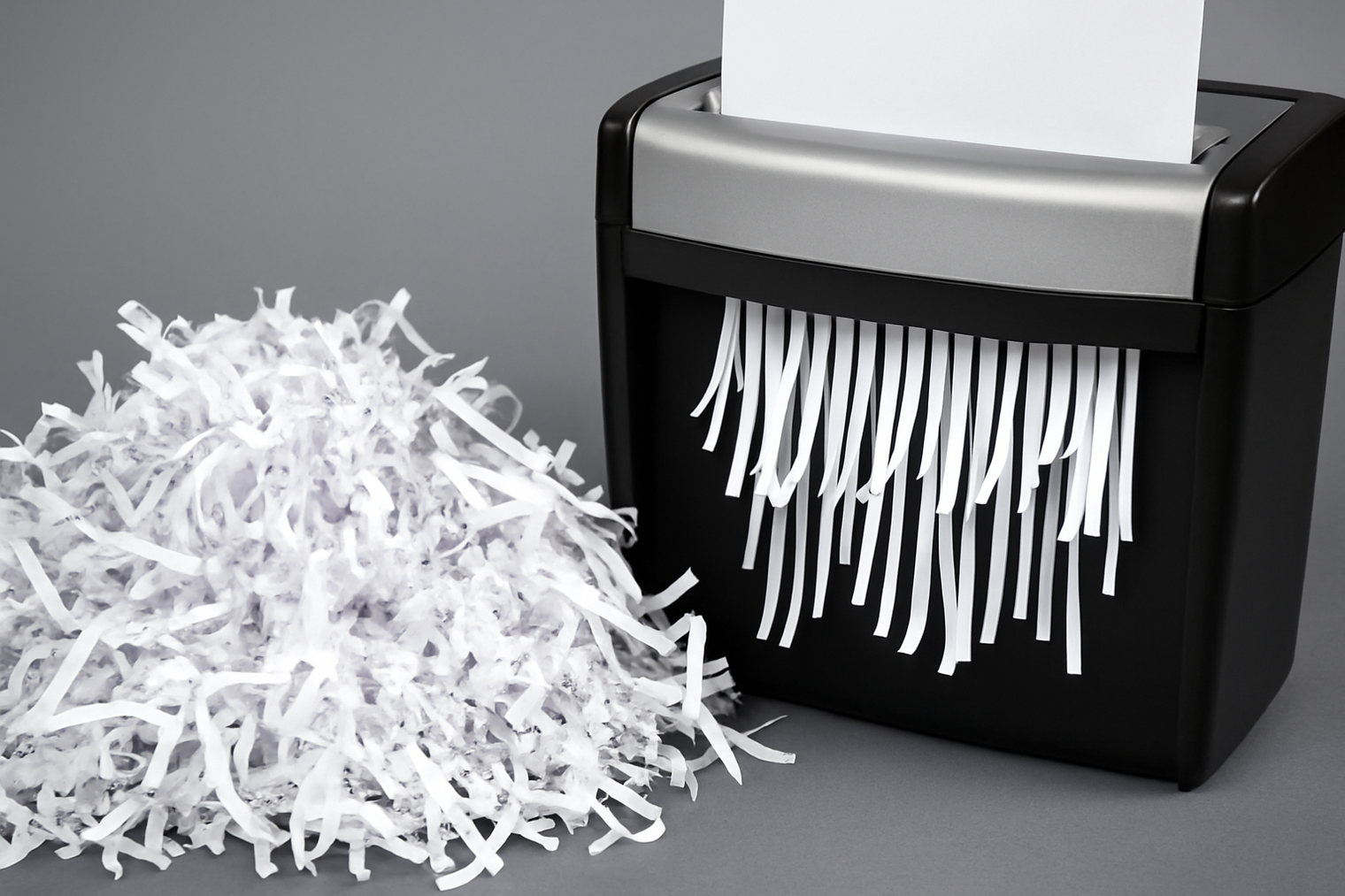In an age where identity theft, corporate espionage, and privacy violations are rampant, properly destroying sensitive documents is not just a recommendation — it’s a necessity. Whether you're managing financial records, client information, or personal files, choosing the safest method for document destruction is critical to protecting yourself and your business.
1. Understand What Needs to Be Destroyed
Not all documents are equal. Before choosing a destruction method, identify what type of documents you're dealing with. These may include:
-
Financial records (bank statements, tax returns)
-
Medical files
-
Business contracts
-
Legal documents
-
Personal identification (passports, IDs)
Once you understand the sensitivity of the documents, you can match them to the appropriate destruction method.
2. Top Methods of Safe Document Destruction
a. Cross-Cut Paper Shredders
Cross-cut or micro-cut shredders are the most secure mechanical solution for home and office use. They cut paper into tiny confetti-like pieces, making reconstruction nearly impossible. For highly sensitive material, a micro-cut shredder is recommended.
Pros: Quick, convenient, and widely accessible
Cons: Generates waste and requires electricity and maintenance
b. Professional Shredding Services
If you have bulk quantities of documents or need certified destruction (such as for legal compliance), professional shredding services are ideal. Many companies offer secure pickup, locked containers, and documented proof of destruction.
Pros: Scalable, legally compliant, secure
Cons: May be expensive for small volumes
c. Incineration (Controlled Burning)
Burning documents in a controlled environment can ensure complete destruction. However, it must be done safely and in accordance with local environmental regulations.
Pros: Permanent destruction
Cons: Risk of fire, air pollution, legal restrictions
d. Pulping and Soaking
For a DIY, chemical-free option, soak papers in water mixed with bleach or detergent until the fibers break down into mush. Stirring and mashing speeds up the process.
Pros: Inexpensive and safe for small amounts
Cons: Time-consuming and messy
3. Digital Files Require Digital Destruction
If your documents are stored digitally (USB drives, hard disks, cloud services), physical shredding won’t help. Use data wiping software or degaussing tools, or physically destroy hard drives using specialized crushers or shredders.
Never assume that deleting a file from your computer makes it irrecoverable — it doesn’t.
4. Best Practices for Document Disposal
-
Establish a routine: Don’t let old documents pile up. Regularly review and destroy outdated files.
-
Use lockable storage before disposal: Until destruction, sensitive documents should be stored in a fireproof, waterproof safe.
-
Train employees or household members: Everyone who handles sensitive documents should know the correct disposal procedures.
5. Combine Fire Protection with Secure Disposal
While destruction is vital, storage before destruction matters just as much. A fireproof document safe or fireproof document bag ensures your files are protected until you’re ready to dispose of them. Products like waterproof and fireproof safes, fireproof file boxes, or portable lockable bags can offer an extra layer of protection from theft, fire, or water damage.
Final Thoughts
The safest way to destroy documents depends on the volume, sensitivity, and type of data. Whether you're shredding, pulping, or hiring professionals, prioritize security at every step. Combine safe storage with effective destruction to ensure your private information never ends up in the wrong hands.
Need help choosing the right fireproof storage for your documents?
Explore our collection of fireproof document bags and home safes designed to keep your data secure until you're ready to dispose of it.

